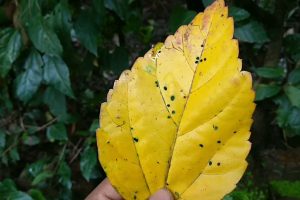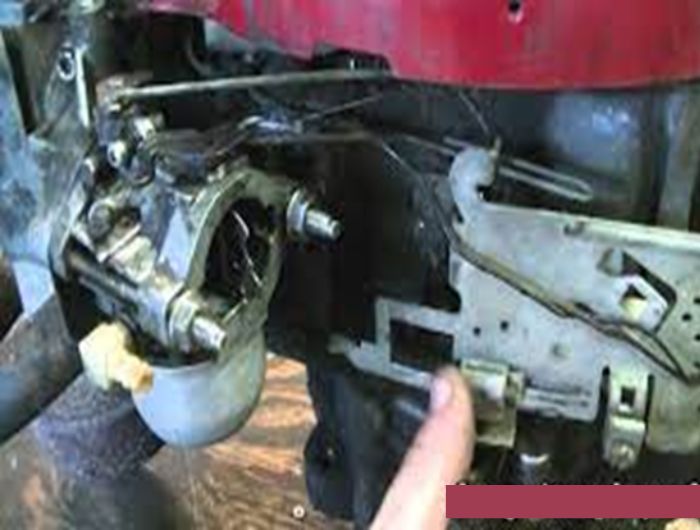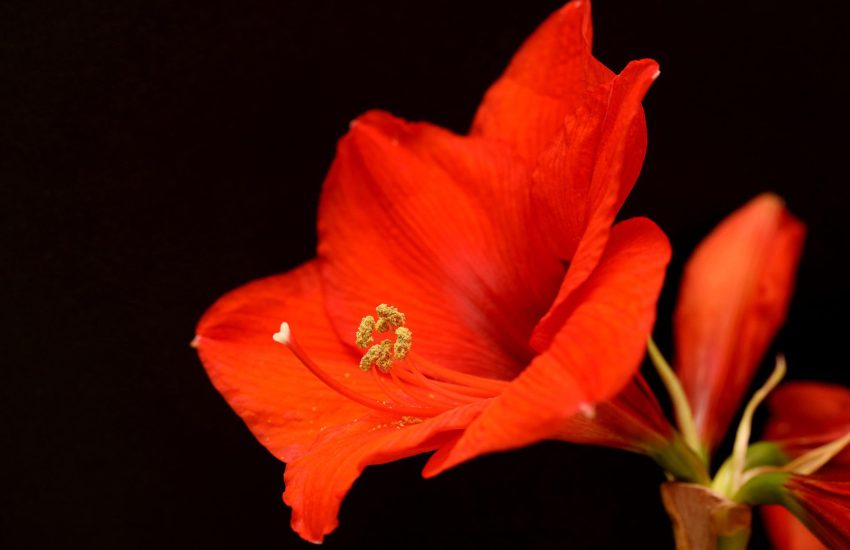Hibiscus Leaves Turning Yellow – How To Keep Your Hibiscus Healthy
Hibiscus plants are popular indoor houseplants in the United States, especially during the summer months when they add an interesting color palette to your home. Growing hibiscus inside is also a great alternative to outdoor hibiscus plants because they are easy to maintain and can be brought inside as soon as the weather begins to cool. One of the most common questions about indoor hibiscus plants is why their leaves are turning yellow.

How does a healthy hibiscus look like
A hibiscus plant should be a bright, cheery sight in your garden. The plants are beautiful, with large flowers and a variety of colors. They’re also drought-tolerant, so they don’t need much water to thrive. Here’s what a healthy hibiscus looks like:
The leaves are green and shiny on top and a lighter green on the bottom. The edges of the leaves should be smooth, not ragged or torn. The stem is thick, straight, and strong without any sign of brown or yellow at its base. It should be upright, not drooping over or crooked in any way.
The flower buds should be tight against the stem with no sign of brown or yellow at their base. If the buds feel soft to the touch, they’re probably dead and will fall off soon anyway.
What can cause hibiscus leaves to turn yellow
Hibiscus leaves are susceptible to several different problems, which can cause them to turn yellow. The most common cause of yellowing leaves on hibiscus plants is too much or too little water.
Improper irrigation
Too much water
When the soil is left wet for extended periods of time, the plant becomes stressed and will begin to wilt or droop on some leaves. The plant will also begin to lose its color, turning a lighter shade of green or yellow-green. If you see this happening in your hibiscus plants, it is best to remove them from the pot and allow them to drain properly before returning them back to the pot. Plants receiving too much water will also have brown spots on their leaves where they have begun to rot due to too much moisture around their roots.
Too little water
If you don’t give your hibiscus plant enough water, it can also cause the leaves to turn yellow. In this case, it’s not because there is too much water but rather because there isn’t enough water available for absorption by the roots and leaves. When they are deprived of water, they will begin to shrivel up and die. This often happens when temperatures rise above 90 degrees Fahrenheit (32° Celsius), and rainfall becomes less frequent or absent altogether.
Pest infestation
Spider mites
Spider mites are tiny and red, which makes them hard to spot. Spider mites affect a hibiscus by sucking its juices out of it. The hibiscus leaves will turn yellow as they lose their color due to not having enough nutrients in them. The leaves will also start to curl up as they die off from being sucked dry by these pests. If left untreated for too long, it can kill an entire plant or bush!
To get rid of spider mites from your garden, you should use an insecticide or pesticide that is meant specifically for this type of pest. You may also want to use neem oil as well since it’s natural and organic, so it won’t harm any bees or other insects in your garden.
Mealybugs
The mealybugs are sap-sucking insects that can cause damage to any plant by feeding on its sap. The mealybug is a small white insect that has a waxy covering and cottony filaments around its body. These filaments give them their name as they look like little balls of cotton when feeding on the plant’s sap.
Mealybugs feed on the plant by inserting their mouthparts into the plant tissue, where they suck out the plant’s sap. This results in stunted growth and wilting of leaves which eventually turn yellow if left untreated for too long. They also excrete honeydew which attracts other pests such as ants, who feed off this sticky substance and then spread it all over your plants.
Whiteflies
Whiteflies are tiny insects that suck sap from the underside of leaves, causing them to become discolored and wilt. They often appear in clusters on the undersides of leaves, where they are difficult to see without magnification. If left untreated, whitefly infestations can severely damage plants and reduce their productivity. Whitefly larvae feed on young tender leaves and stems, while adults feed on flowers, pollen, and fruit.
Adult females feed on sap from phloem (inner bark) cells located just beneath leaf surfaces on both sides of veins. As they feed, they inject saliva into plant tissues which causes stippling or blistering on leaf surfaces. These stippling sites serve as protective coverings for newly emerged female whiteflies when they begin laying eggs after feeding for about two weeks on a single host plant species. It typically takes about three weeks for eggs to mature into adults; however, there may be multiple generations per year depending on temperature conditions in your area.
Aphids
The aphid is a small, soft-bodied insect that feeds on plants by piercing their tissues with its sucking mouthparts. The aphid excretes honeydew (a substance that is sweet, sticky, and sugary) which provides a source of food for ants and other insects. The ants collect this honeydew, protecting the aphids in return. The honeydew also encourages leaf mold growth, reducing plant vigor.
The best control of aphids is through prevention. When you purchase your plants from a nursery or garden center, inspect them closely for any signs of infestation before bringing them home. Aphids are most commonly found on plants that have been stressed by improper care or environmental conditions such as drought or poor drainage. Once you bring your plants home, check them regularly for signs of aphid damage, such as deformed leaves or buds and sticky messes on leaves and stems (honeydew).
Scale insects
Scale insects are tiny, soft-bodied insects that feed on plant sap. They can be found attached to stems or leaves and may have a waxy coating that makes them appear white or grayish. Scale insects are common on hibiscus plants, especially during the summer months.
Scale insects suck nutrients from the hibiscus leaves, causing yellowing of the leaves and stunted growth in your plant. In some cases, you may also see brown discoloration on the undersides of your hibiscus leaves.
The first sign of scale infestation is usually a sticky substance on your plant’s stems and leaves – this is actually the honeydew excreted by adult female scale insects as they feed on plant sap. The honeydew attracts ants and encourages sooty mold growth on your hibiscus plant’s leaves; both of these can make your plant look unsightly and unhealthy.
Nutrient deficiencies
The main nutrients that a hibiscus plant needs are nitrogen, phosphorus, and potassium. These nutrients are needed for good growth and development of the plant.
Nitrogen deficiency: Plants need nitrogen for healthy growth and dark green foliage. When plants don’t get enough nitrogen, their growth slows down, and they may produce very small leaves with dull coloration or yellowing on some leaves. Nitrogen deficiency causes stunted growth, yellowish discoloration on older leaves (chlorosis), leaf scorch, and premature shedding of leaves. A nitrogen deficiency may also cause poor root development, affecting the plant’s health.
Phosphorus deficiency: Phosphorus is another important nutrient required by plants in large amounts to encourage healthy root development and support strong cell division in growing plants. Phosphorus promotes strong root formation, which helps plants absorb water and nutrients from soil more efficiently than if they had weak roots.
Potassium Deficiency: Hibiscus leaves turn yellow when the plant does not get enough potassium. Potassium is an essential nutrient that helps to build protein and carbohydrates. It also helps with water balance and movement within the plant.
Iron Deficiency: Iron deficiency causes yellowing between the veins of hibiscus leaves. This is due to the cells not being able to transport oxygen properly throughout the plant. This deficiency can be caused by over-watering and drainage problems that prevent sufficient oxygen from reaching the roots or stems of hibiscus plants.
Sunlight
Hibiscus plants thrive in full sun and partial shade. If your hibiscus is getting enough sunlight, it will produce large flowers and grow to an average height of 6 feet.
Too little Sunlight
If your hibiscus plant is not getting enough sunlight, it will produce small white flowers that do not open fully. The leaves may also be smaller than normal and have a yellowish-green color instead of their typical dark green color. The stems also may become weak and easily break under pressure from wind or rainstorms. When hibiscus plants don’t receive enough sunlight to photosynthesize properly, they will not be able to produce enough chlorophyll or other nutrients needed for healthy growth.
Too much sunlight
If your hibiscus plant is getting too much sunlight, the leaves will start to turn yellow and fall off. The plant will attempt to protect itself from the sun by putting out more leaves and blooms in an attempt to shade itself. This will only work for so long before the plant becomes overgrown with foliage and eventually dies.
Poor drainage
Poor drainage is a common problem with many plants, including hibiscus. This is especially true for plants that are grown in containers and kept indoors. Poor drainage can lead to a number of other problems, including root rot.
Poor drainage soil is often sandy or clay-based and has a tendency to hold too much water. This can cause the plant’s roots to suffocate and die, which can lead to yellowing of the leaves and eventual death of the plant.
If you suspect that your hibiscus has poor drainage, check the soil first before moving on to other possible causes of yellowing leaves. If you discover that your soil is too sandy or clay-based and retains too much water, then you will need to amend it by adding organic matter like compost or peat moss.
Disease
Hibiscus leaves can turn yellow due to a number of diseases. Diseases that cause hibiscus leaf yellowing can be serious, so it is important to identify and treat them.
Anthracnose
Anthracnose is a fungal disease that causes spots on the leaf surface and eventually leaves them wilting and browning around the edges. Anthracnose can spread to other plants through the air or by contact with infected material. It can be treated with fungicides and sanitation.
Powdery mildew
Powdery mildew is another common problem for hibiscus plants. It causes white powdery patches on the underside of leaves and stems that eventually turn brown. Powdery mildew is more common in warm climates, but it can occur anywhere if conditions are right.
Leaf spot (Septoria)
Leaf spot (Septoria) is another fungal disease that affects hibiscus plants. It produces small brown spots on the leaves that later turn grayish-black and may become distorted or drop from the plant. This disease can be controlled through sanitation practices such as removing dead or diseased leaves from around the plants and pruning out any infected branches near healthy areas of bark or wood tissue on the trunk or limbs of your hibiscus tree to prevent further spread of this fungal disease by leafhoppers and other insects that carry it from plant to plant.
Downy mildew
Downy mildew is caused by Peronospora sparsa, which attacks many types of plants but does not usually cause serious damage in hibiscus plants unless they are under stress from other problems such as too much water or poor soil drainage. Downy mildew causes small yellow spots on new leaves that turn white as they age. Leaves may also become distorted with brown streaks running lengthwise along them. Downy mildew can be treated with fungicides available at garden centers or nurseries.
Hibiscus leaves turn yellow when a plant is irrigated with hard water
Hard water contains dissolved minerals that can cause a number of problems for plants, including the hibiscus. The most common minerals found in hard water are calcium and magnesium, but there are many others. These minerals are usually in high concentrations, which can cause serious problems for your hibiscus plants.
The first issue is that hard water can cause mineral deposits to form inside the soil or on its surface. These deposits may restrict the movement of nutrients into your soil and prevent them from being absorbed by your plant roots. This could result in yellowing leaves because your plant isn’t getting enough nutrients to produce healthy growth. In addition, these deposits can prevent proper drainage from occurring so that water stays on top of the soil instead of percolating through it as intended by nature.
Hibiscus plants are beautiful flowering shrubs that come in an assortment of colors. There are red, pink, and purple varieties, so they make great accent plants in any garden. However, if you notice your hibiscus leaves have turned yellow, you may have cause for concern.


